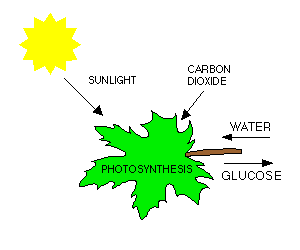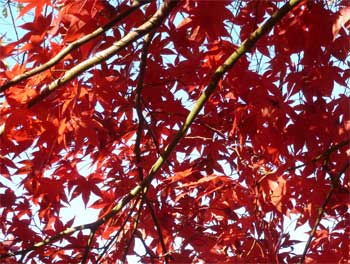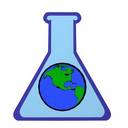Why Do Leaves Change Color in Autumn?
Table of Contents
We all enjoy the colors of autumn leaves. The changing fall foliage never fails to surprise and delight us. Many areas in the United States are among the best in the world for leaf viewing, including New England, the Southeast, the Northwest and the Great Lakes regions.
Find maps, dates, and best scenic drives for fall colors
Search now for "fall foliage"
Did you ever wonder how and why a fall leaf changes color? Why a maple leaf turns bright red? Where do the yellows and oranges come from?
To answer those questions, we first have to understand what leaves are and what they do.
Photosynthesis
Leaves are nature's food factories. Plants take water from the ground through their roots. They take a gas called carbon dioxide from the air. Plants use sunlight to turn water and carbon dioxide into oxygen and glucose. Oxygen is a gas in the air that we need to breathe. Glucose is a kind of sugar. Plants use glucose as food for energy and as a building block for growing.

The way plants turn water and carbon dioxide into oxygen and sugar is called photosynthesis. That means "putting together with light." A chemical called chlorophyll helps make photosynthesis happen. Chlorophyll is what gives plants their green color.
Autumn Preparations for Winter
Plants are busy growing all summer long and into autumn. But the dark, dry days of winter are coming. As the days get shorter, trees use this signal to "know" it's time to begin getting ready for winter.
During winter, there is not enough light or water for photosynthesis. The trees will rest, and live off the food they stored during the summer. They begin to shut down their food-making factories. The green chlorophyll disappears from the leaves.
br>
As the bright green fades away, we begin to see yellow and orange colors. Small amounts of these colors have been in the leaves all along. We just can't see them in the summer, because they are covered up by the green chlorophyll.
The bright reds and purples we see in leaves are made mostly in the fall. In some trees, like maples, glucose is trapped in the leaves after photosynthesis stops. Sunlight and the cool nights of autumn cause the leaves turn this glucose into a red color.
The brown color of trees like oaks is made from wastes left in the leaves.
It is the combination of all these things that make the beautiful fall foliage colors we enjoy each year.
LEARN MORE → about the bright colors of autumn leaves, and how plants survive through the winter.
Easy Reading - The Colors of Fall Leaves
Plants make their own food. They take water from the ground through their roots. They take a gas called carbon dioxide from the air. They turn water and carbon dioxide into food and oxygen. Oxygen is a gas in the air that we need to breathe.
Plants make their food using sunlight and something called chlorophyll. Chlorophyll gives leaves their green color.

Winter days are short and dry. Many plants stop making food in the fall. The chlorophyll goes away. Then we can see orange and yellow colors. These colors were in the leaves all summer, but the green covered them up.
Some leaves turn red. This color is made in the fall, from food trapped in the leaves.
Brown colors are also made in the fall. They come from wastes left in the leaves.
How Do Plants Prepare for Winter?
Plants are busy growing all summer long. But how do they survive the dark, dry days of winter?
Read More →


